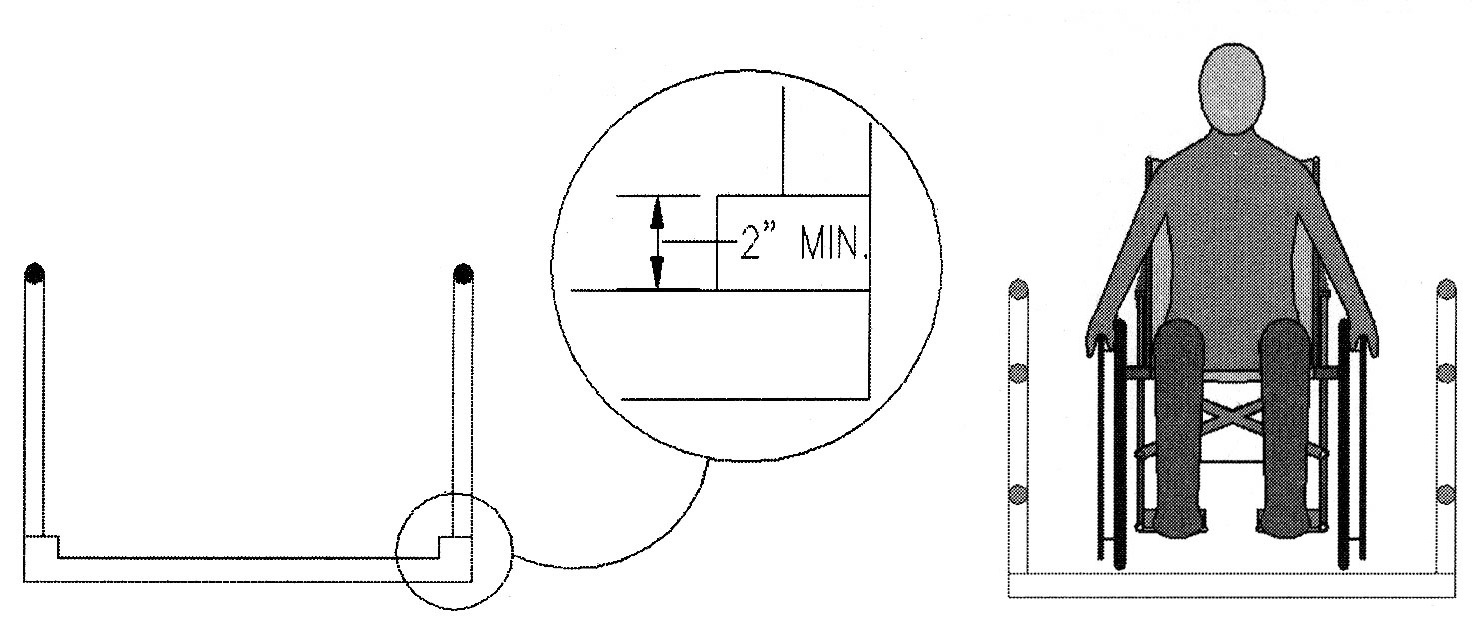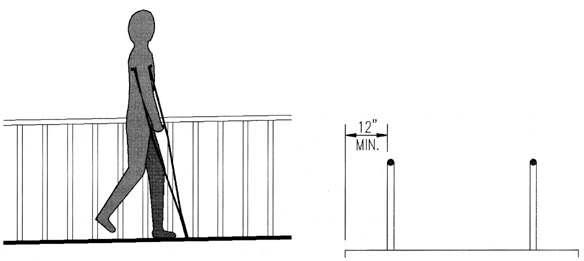Edge Protection [4.8.7]
Handrails alone do not necessarily provide effective edge protection for people who use wheelchairs, crutches, and other mobility aids. Curbs (or walls) are effective in keeping both wheelchairs and crutch-tips from slipping off the edge or getting caught on vertical posts. Horizontal rails are another alternative although mounting heights are not specified (the 27 inch height in ADAAG Figure 17 pertains to the return of extensions as protruding objects). A rail mounted close enough to the ramp surface to prevent passage of a 4 inch diameter sphere can function like a curb in keeping front casters from getting stuck on vertical posts and crutch-tips from slipping off the edge.


Vertical balusters can be used; intermediate spacing is not specified by ADAAG but is commonly covered by local codes. Curbs, horizontal rails, or extended platforms can help prevent crutch-tips from slipping off the edge between rails. Extended platforms, a permitted alternative, can keep crutch-tips from slipping over the edge (but might not keep wheelchair casters from getting caught on vertical posts unless horizontal or vertical guard rails are also provided).

User Comments/Questions
Add Comment/Question